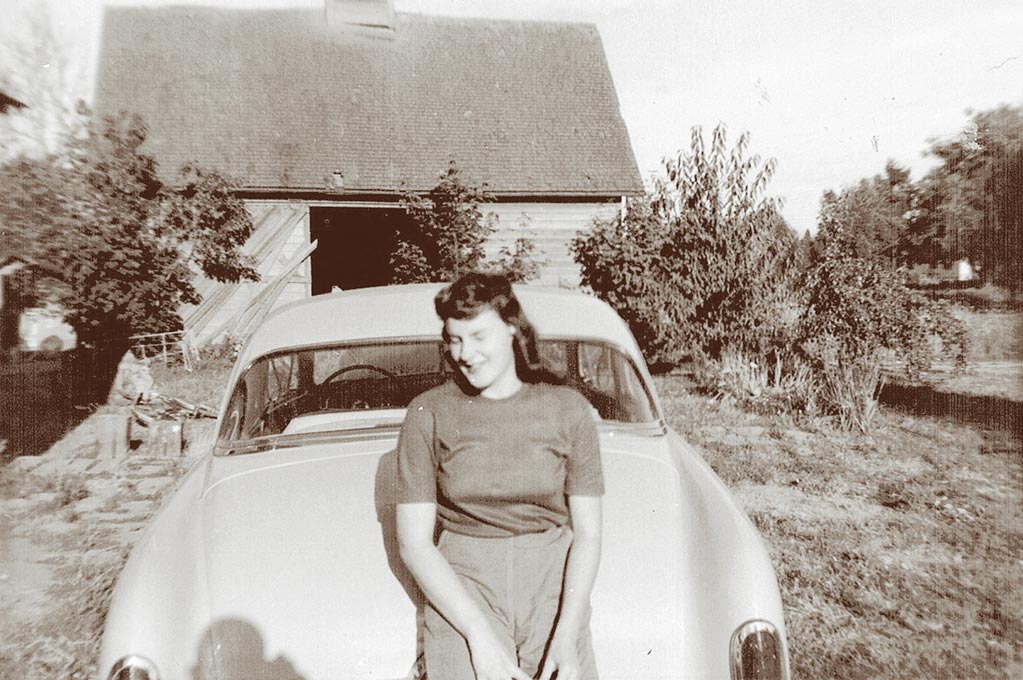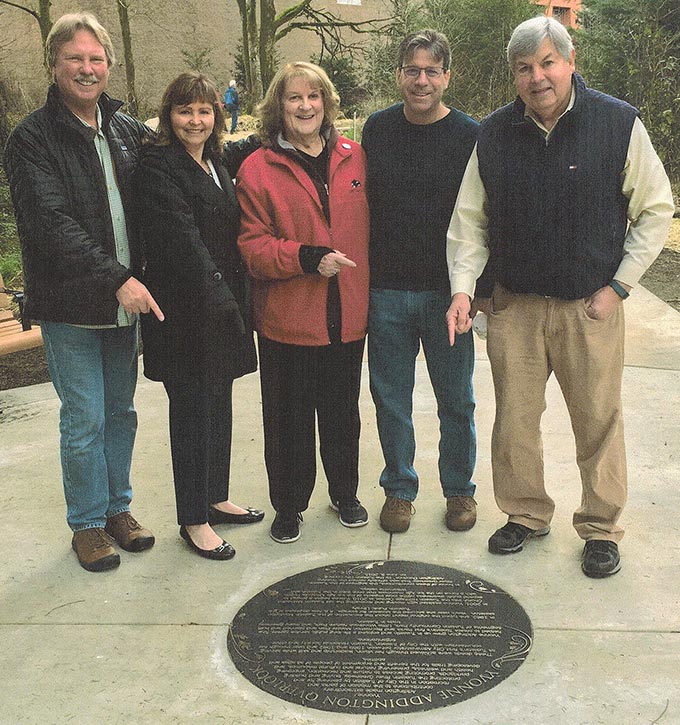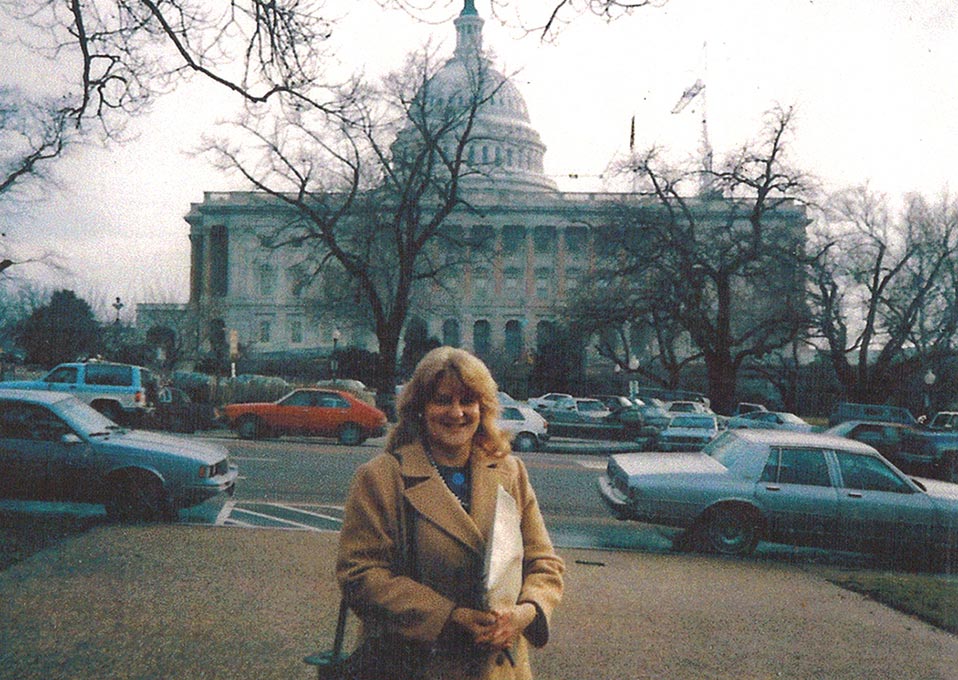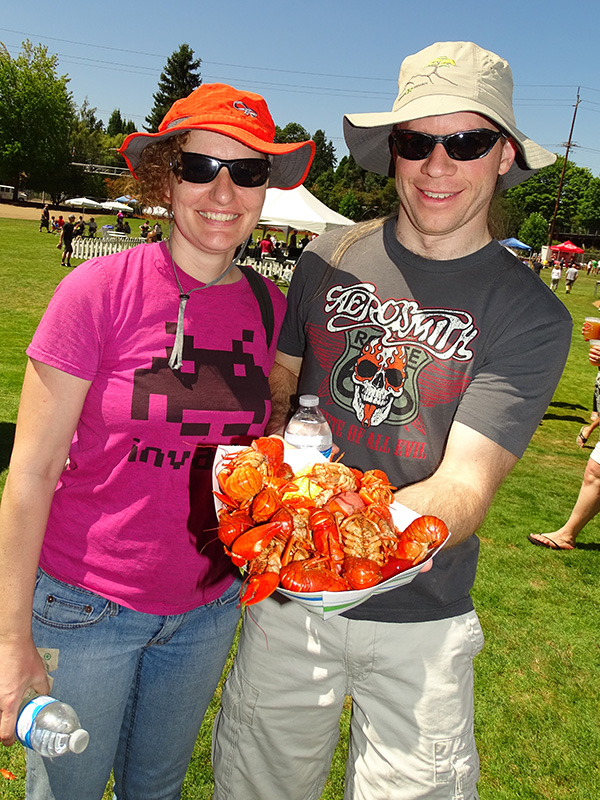
Member of a 1900s Tualatin immigrant family. Wife of Jim Addington, mother of Maxine and Randy and grandmother of Leah, Audrey and Preston. The first City of Tualatin city manager and a municipal court judge. The Washington County and State of Oregon employee who was instrumental in economic and infrastructure development. Promoter of Tualatin’s unique history, including the Ice Age floods and a certain mastodon.
The City of Tualatin was incorporated in 1913, and Yvonne was a big part of the shape it took starting with her first job as city treasurer.
“I-5 had been built, Tualatin was in the next ring of growth but had no public works to accommodate growth. Mayor Lee Gensman, followed by Mayor Jim Brock opened City Hall in 1967, and I became the first city manager,” said Yvonne, who served in that role until 1982.
Yvonne was asked to become the Municipal Court judge, although she didn’t have a law degree. “I was told, ‘You don’t need to be a lawyer, you need to have common sense,’” she said.
“I held court every Tuesday, and I am proud of the decisions I made. When a 16-year-old got a driving ticket, I would make him go to the new Meridian Park Hospital and work in the emergency room for eight hours to see accident victims come in. If he had no more infractions for six months, his record was expunged. It became a nationally known program.”
Yvonne went on to serve as president of the Oregon Municipal Judges Association and was a board member of the Oregon Judicial College.
As a teenager, one of Yvonne’s jobs had been working at Fred Meyer’s Yamhill cafeteria, and 20 years later Fred Meyer bought land in Tualatin for his future store and came into City Hall.
“I told him as a teen he taught me how to carefully put Jello on plates of lettuce to be attractive to buyers,” Yvonne said. “Fred Meyer went to the site of the new Tualatin store every day during construction to inspect progress and would drop by City Hall occasionally to say hello. He was a first mentor.”

As the city manager working with professional planners, “I led the development of the city’s Comprehensive Plan to lay the groundwork to transform Tualatin from a population of about 300 to a city of 20,000 by the year 2000 and also created the downtown Urban Renewal Plan to eliminate blight,” Yvonne said. “Very capable city staff were later responsible for implementing the plans.”
Another issue she tackled was Tualatin’s lack of a reliable water source. A well “that went dry every summer” was the source of Tualatin’s water until the signing of a contract with the Portland Water Bureau, whose primary source is the Bull Run Watershed.
“The City Council limited water service to inside the city limits to control growth,” Yvonne said. “Bringing in water service was the best thing that ever happened in Tualatin.”
At the time, Tualatin residents relied on leaking septic tanks for sewage disposal until a modern three-stage treatment plant was opened behind the Hervin Pet Food cannery. “Only Las Vegas had one at the time,” Yvonne said. Later, in 1970, Tualatin was one of 10 cities and 16 sanitary districts that combined to form the Unified Sewerage Agency and eliminate the need for Tualatin’s own treatment plant.
Yvonne is most proud of fighting opposition to bring Meridian Park Hospital to Tualatin, with planning starting in 1968, and today Legacy Meridian Park Medical Center has grown to become the city’s second-largest employer with 800 employees.
Under Yvonne’s tenure, the city purchased and developed park lands, including part of Tualatin Community Park, and built streets and other infrastructure. Harvey Van Raden donated the land next to the first city park for the first community center and the first library after the city allowed his company to annex and develop Peerless Trailer on north side of Tualatin River.
“We got approval to annex the Bridgeport area north of the Tualatin river, which Rivergrove also wanted,” Yvonne said. “We went to the Supreme Court and won since the petitions to annex it to Tualatin connected by the I-5/Tualatin River Bridge were filed five days before Rivergrove filed its petition to annex the land. This became known as the Bridgeport Village area.
“My last project was securing financing for the Tualatin Senior Center,” she said.
Yvonne had long been fascinated by the discovery of ancient mastodon bones just south of the current Fred Meyer store. Two Portland State University students dug up about half of a mastodon skeleton in 1962, which was first displayed at PSU.

It was donated to the city in the 1970s after Yvonne saw the skeleton labeled “Tigard Mastodon” on display at PSU, and when she asked if the name could be corrected, they asked her if the city wanted it because they had run out of room for it. After several years in storage, the Tualatin Historical Society and city residents raised money to restore the bones and put them on display at the library. The skeleton was radio carbon-dated and determined to be a female in her 20s that died about 14,000 years ago. The original tusk and molar are on display at the Tualatin Heritage Center.
Before mastodons roamed the area, many Ice Age floods covered the Willamette Valley 15,000 to 18,000 years ago, leaving behind two huge boulders – 10 ½ tons and 8 ½ tons – in Gaston along with rich soil that attracted settlers. One of Yvonne’s really “big” projects was getting the boulders moved to the Tualatin Historical Society property in 2014 after learning a farmer was going to blow them up.
Yvonne is a member of several Ice Age-related organizations and is currently working on implementing the Tualatin Ice Age Floods Tourism Plan with the Tualatin Chamber of Commerce, Portland State University and several geological/ancient-animal organizations. “Our objective is to raise money to build an interpretive center and involve the business community,” she said.
Yvonne represents the Lower Columbia Chapter of the Ice Age Floods on the Board of Directors of the Willamette Falls and Landings Heritage Coalition. A thorn in the side of many is that the Willamette Meteorite is on display at the American Museum of Natural History in New York City instead of in Oregon. It is the largest meteorite found in North America and the sixth largest in the world.
The Confederated Tribes of the Grand Ronde, which includes the Atfalati/Tualatin band of Kalapuyas, have long held the meteorite sacred. It was found on land owned by the Oregon Iron and Steel Company near West Linn, and in 1905 William E. Dodge purchased it for $26,000, displayed it at the Lewis and Clark Centennial Exposition and donated it to the New York museum, where it has been on display since 1906. The Grand Ronde Tribe has first rights to the meteorite if New York museum fails to display it, and tribal members visit it each year.
Yvonne is a board member of the Tualatin Historical Society and joined when “we moved the church,” she said. In 2006 the organization raised $250,000 to preserve and move the 1926 Methodist Church from Boones Ferry Road to Sweek Drive, where the building serves as the Tualatin Heritage Center and is run cooperatively with the city.
Yvonne also was involved in the development of the Tualatin River Greenway Trail, a 12-foot-wide multi-use pedestrian and bicycle trail, convincing CenterCal property owners to donate land for the project; Mr. and Mrs. Fred Bruning, the co-company owners, also donated a $220,000 bronze sculpture of the Tualatin mastodon. In 2015 the Tualatin City Council honored Yvonne with a bronze plaque placed at the trail.
Yvonne’s public service efforts extend far beyond the Tualatin area. As the manager of the 1982-83 Washington County Urban Comprehensive Plan, she led the planning and development of county urban areas through 2000, winning approval for projects from the state Land Conservation and Development Commission.
In 1983, Yvonne was hired by Gov. Victor Atiyeh as the first Oregon Community Development Program manager to administer and award federal Community Development Block Grant funds to local governments. “Many jobs were created, and it is still providing millions of dollars for infrastructure today,” Yvonne said. “That point in my career was wonderful. In Oregon there were 220 non-conforming water systems.”
At Gov. Atiyeh’s direction, Yvonne went to the Oregon Legislature and acquired dedicated lottery funds for job-creating infrastructure projects that now total $3 billion, according to the Oregon Lottery. She went on to serve Govs. Goldschmidt, Roberts, Kitzhaber and Kulongoski as she worked on projects around the state.

“I got a call from the Prineville City Council that Les Schwab Tires was planning to move its headquarters to California,” Yvonne said. “One reason was that there was no water service to the Prineville airport where Les Schwab wanted to expand, and the city could not afford to build the line. Les Schwab himself flew to Salem to meet with us. The night before the meeting with him, I was at his Sherwood store and purchased his new autobiography, ‘Les Schwab-Pride in Performance-Keep it Going!’
“I agreed to finance a water line to the airport, and when we met the next day, I asked Les Schwab to autograph the book, and he did so, saying, ‘Well, boys, we’re staying in Oregon.’ Later, he and Mrs. Schwab invited me to dinner in Prineville to celebrate their decision to stay in Oregon.”
Yvonne also served eight years as president of the national Washington, D.C., Council of States Community Development Agencies, representing 50 state governors’ offices before she retired in 2003, two years before her husband Jim died.
Sen. Mark Hatfield and Congressman Les AuCoin were key supporters in getting more federal funds for community development and jobs in Oregon, according to Yvonne. Among the many famous people she met was current New York Gov. Andrew Cuomo, saying, “I introduced him at one of our conferences. He was director of Housing and Development at the time.”
Why does Yvonne do it all? “I led the developments, but key elected and volunteer people plus important staff implemented those plans years after I had moved on,” she said. “I traveled to many areas of the country and states and even found my family in other countries but could find no better place than Tualatin to continue helping in my retirement. Tualatin is my hometown, and I want to contribute back to it.”



















